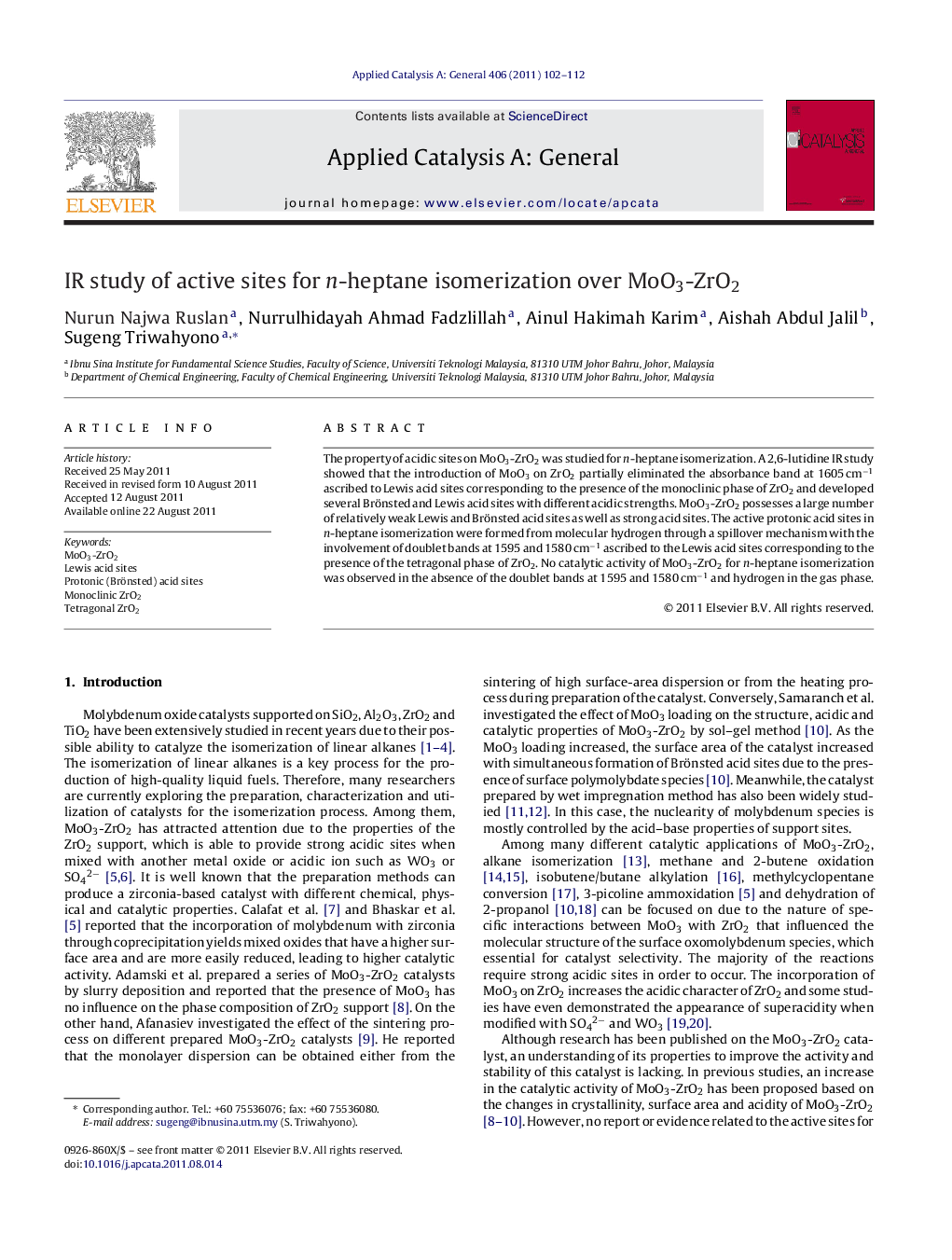| Article ID | Journal | Published Year | Pages | File Type |
|---|---|---|---|---|
| 41228 | Applied Catalysis A: General | 2011 | 11 Pages |
The property of acidic sites on MoO3-ZrO2 was studied for n-heptane isomerization. A 2,6-lutidine IR study showed that the introduction of MoO3 on ZrO2 partially eliminated the absorbance band at 1605 cm−1 ascribed to Lewis acid sites corresponding to the presence of the monoclinic phase of ZrO2 and developed several Brönsted and Lewis acid sites with different acidic strengths. MoO3-ZrO2 possesses a large number of relatively weak Lewis and Brönsted acid sites as well as strong acid sites. The active protonic acid sites in n-heptane isomerization were formed from molecular hydrogen through a spillover mechanism with the involvement of doublet bands at 1595 and 1580 cm−1 ascribed to the Lewis acid sites corresponding to the presence of the tetragonal phase of ZrO2. No catalytic activity of MoO3-ZrO2 for n-heptane isomerization was observed in the absence of the doublet bands at 1595 and 1580 cm−1 and hydrogen in the gas phase.
Graphical abstractFigure optionsDownload full-size imageDownload high-quality image (161 K)Download as PowerPoint slideHighlights► MoO3-ZrO2 possesses Brönsted and Lewis acid sites with different acidic strength. ► Bands at 1605 and 1590 cm−1 are Lewis acid sites corresponding to monoclinic ZrO2 ► Bands at 1595 and 1580 cm−1 are Lewis acid sites corresponding to tetragonal ZrO2. ► Only a doublet bands at 1595 and 1580 cm−1 involved in the formation of H+ from H2. ► No activity was observed in the absence of a doublet bands at 1595 and 1580 cm−1.
